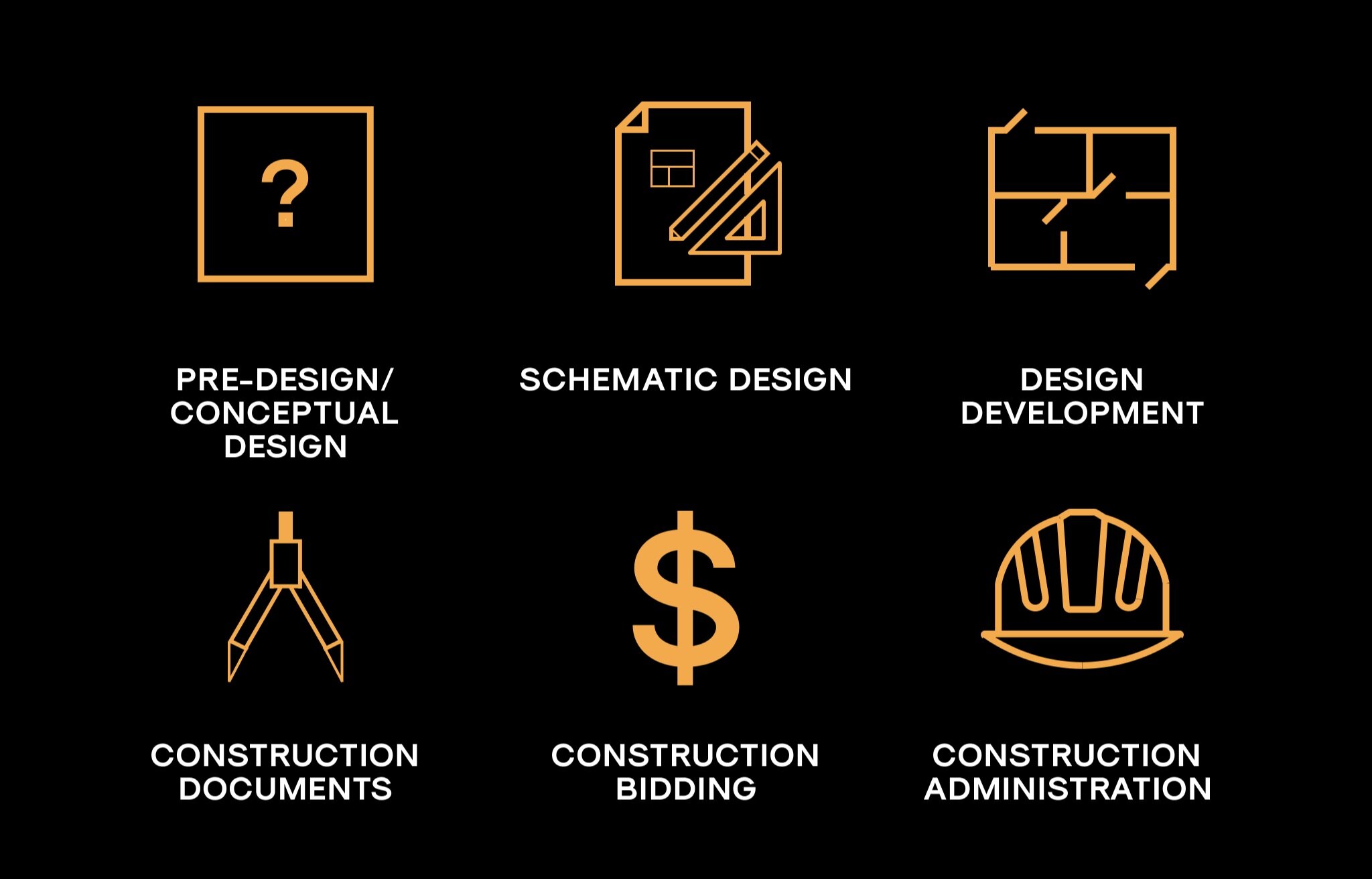The design process is a complex journey, with many people involved and full of variables and decisions to be made.
Although the process varies depending on code, architectural firm or even client, is important to have a step-to-step plan for the completion of the project.
That’s when having a good understanding of the phases that form the design process, the deliverables for each one and the variables that affect them becomes essential as architectural designers.
In this post, I will share the different stages of a project, the different parties involved in each one and the variables and considerations that influence them.
In this post:
Objective
Stages and Timeline
Parties Involved
Resources
Objective

Starting a new project can be a demanding task. The main goal of the design stages is to break up the process into more manageable smaller parts. Each one with their own goals and different parties involved in the process.
This strategy gives a clear understanding, both to the client and to the design team, of the milestones, documentation and decisions to be made in any step of the process.
Next are presented the most common phases present in an architectural design project. Some countries Institutes of Architects don’t include some of them or add new ones, so you should take the following as a guide to get the concept.
Also, different projects and clients demand different approaches, so keep that in mind.
Phases
The usual stages are:

1) Pre-design/Conceptual Design

Goal: Research the requirements and determine the criteria for the project.
This is the first step in the process and takes place before any design work is done. Here you will define the scope of the project as well as understanding the problems, needs and wants from the client. Sometimes architects will even do a feasibility study to determine if the project is viable in the first place
The requirements given by the client will then be contrasted with other information given by an analysis of the site, research of specific code issues, zoning analysis and any other relevant studies.
The duration of this phase can vary depending on the project's complexity, the experience of the architect and other factors.
Deliverables:
- Program of requirements
- Schedule
- As-built drawings
- Code analysis
- Site analysis
2) Schematic Design

Goal: Explore and present design options and narrow down to preferred design concepts.
In this stage we take the requirements and information gathered in the pre-design phase to develop the preliminary form, distribution and general plan of the project. It can be developed through both sketches and technical drawings but without going into much detail. Just enough for any required submissions and to go back and forth with the client.
Deliverables:
- Site Plan
- Floor plans
- Elevations/Sections
- Area Analysis
- Renderings
- Preliminary budget
3) Design Development

Goal: Refine and develop the design. Preliminary layout of structural and mechanical systems.
In this phase the design team will go into more detail, selecting finishes, materials and products such as fixtures, windows, doors, etc...
This is when consultants are brought in to start designing their portion of the project. Our task as architects is to coordinate the different parties involved in the process.
Deliverables:
Outdated documents from last phase and also:
- Outline Specifications
- Key Interior Elevations
- Reflected Ceiling Plans
- Key details
- Consultant's drawing
- Revised cost estimate
4) Construction Documents/ Pre-tender

Goal: Selecting finishes. Prepare technical documents and details required for construction and obtaining approvals.
In this phase the documentation of the project will be worked to the maximum level of detail possible so a contractor can build it as designed. Any technical issues and decisions will be resolved here.
All architects, consultants and engineers finish all their technical drawings and define the final specifications of the project.
Also, various set of drawings are done for authority submissions and approvals.
Deliverables:
All the documents from previous phases updated to full detail. Also:
- Consultant’s final technical drawings.
- Final sets for authorities approval.
5) Construction Bidding / tender Process

Goal: Obtain pricing from contractors and award to commence construction project.
In this stage a contractor is selected to take on the construction.
There are two ways of hiring:
By negotiation: A selected contractor based on their capabilities, who will bid with subcontractors and then form an overall project bid. Then the owner can negotiate the price and fees.
By bidding: The specifications are put out to bid with multiple contractors.
Architects should help contractors with questions and provide any additional information during this phase.
Deliverables:
Any additional specifications and info necessary to solve contractors questions.
6) Construction/Contract Administration

Goal: Handle changes, supervise congruence between design and construction
In this stage architect's role is to be the owner's agent providing site visits, reviewing that materials and specifications are done correctly and writing reports. Regular meetings with contractors and other parties are expected to keep an eye on the progress made.
Also request for changes in the design and other issues from contractors are usually sent to the architects to handle.
Deliverables:
- Supplemental documentation
- Field reports
- Punch List
Conclusion
Hope this post has helped you understand the various phases of a project.
I recommend all architectural designer be exposed and work on all design and construction phases of the project for a holistic learning. Do consult your seniors whether you can tag along projects at different stages for effective learning.
Resources
Singapore Institute of Architects - Scope of Service Matrix
https://apex.sia.org.sg/xshare/SIA_Scope_of_Service_Matrix-20180814-for_website.pdf
HMH Architecture + Interiors - The Design Process
https://hmhai.com/design-phases/
Monograph - Guide to Architectural Design Phases
https://monograph.io/blog/guide-to-design-phases
.png)



